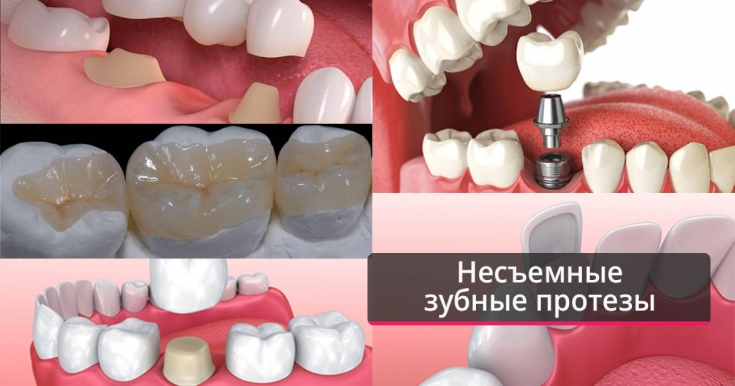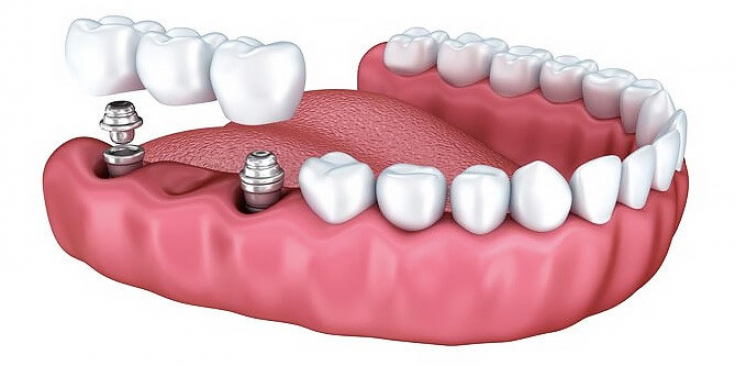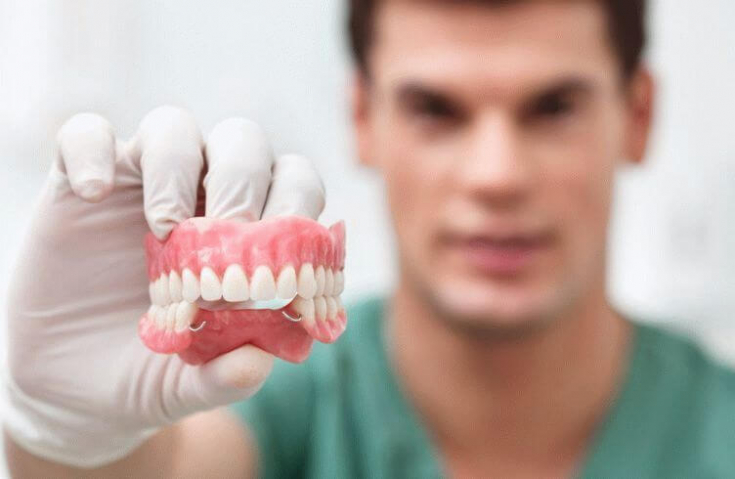Tooth health depends on many factors – good nutrition, proper care of the oral cavity, the absence of bad habits. The correct bite is important not only for the aesthetic appearance, but also for the full functioning of the jaw. The work of the gastrointestinal tract is associated with the condition of the teeth, they are directly involved in the process of eating. Destruction occurs unexpectedly, regardless of age, gender. Fixed dentures – a chance to restore decayed teeth and create a brilliant smile. The advantage of this type of prosthetics – suitable for installation in the presence of caries.
estet-portal.com will tell about the types of fixed structures, how they differ and what they are for.
What are fixed dentures
Someone's word "prosthesis" terrifies, but there is nothing to be afraid of. In dentistry, this is the best option for restoring a beautiful smile. Dentures are available for improvement, unlike native teeth. The range of prostheses consists of various materials. This is the ideal option to restore individual teeth.
Peculiarities of using different types of dental implants
Fixed dentures – construction to replace broken teeth. If they are created correctly, the patient does not feel discomfort, perceiving them as his own. They are firmly fixed, not subject to self-removal. Hygiene is no different from brushing your teeth.
Follow us on Instagram!

Installation is a multi-step process. First, affected teeth, caries are treated, tartar and dirt are removed. The dentist makes an impression, which should fit perfectly, not distort the appearance, and be comfortable. After trying it on, begin to fix it.
The main types of fixed dental structures
Crowns. Placed over the affected tooth to prevent further decay. Restores chewing function. On a metal basis, the most durable, it is not recommended to put on the front row of teeth, they completely betray their artificiality due to color. Ceramic – installed on the front teeth, not strong, the appearance is completely similar to natural ones. Perfectly aligned with the gum tissue.
Subscribe to our page on Facebook!
Bridge. Missing more than 2 teeth requires a bridge. These are crowns that are soldered together. They are fixed on your own tooth, they are turned and adjusted in shape and size. If the natural ones are not preserved, metal implants are pre-screwed. The bridge is on top. There is an adhesive bridge, with its help a tooth is restored by attaching the structure to the neighboring ones. In this case, there is a risk of rapid infection with caries of the nearest teeth.
Teeth whitening in dentistry: types of methods and their features

Veneers – are fixed on the front teeth, creating their perfect appearance. They have a ceramic base, look like plates that are attached over a natural tooth.
Lumineers – differ from the previous ones only in a smaller thickness. No preparation is required to install them.
Tabs – used in case of complete destruction of the tooth. To restore it, the tabs – basic design.
Benefits of fixed dentures for humans
After the installation of prostheses you do not feel any discomfort. The dentist will make recommendations for general food intake. It is recommended to consume solid foods after a while. Too hot and cold dishes are prohibited, they will damage the structure. Brushing your teeth twice a day, after meals – rinsing. Irrigator – Ideal assistant for oral hygiene. If you have the opportunity – be sure to purchase.
Benefits of dentures:
- smile and healthy teeth last as long as possible
- the dentist selects materials similar in color to natural teeth, it is impossible to distinguish;
- no discomfort, comfortable everyday wear;
- reliable fixation, only a doctor can remove the structure, fully withstand the chewing of food.
All the subtleties of dental accessories: skies

Fixed dentures will successfully replace your own teeth. You can chew, smile, drink any drinks without worrying about the state of your smile. The decision on prosthetics must be taken immediately, because when the tooth is damaged, the load is distributed unevenly, which leads to bone tissue atrophy and gum disease.
Atrophy of the jaw tissue – how to get around the disease
See more important and useful information on YouTube:






Add a comment